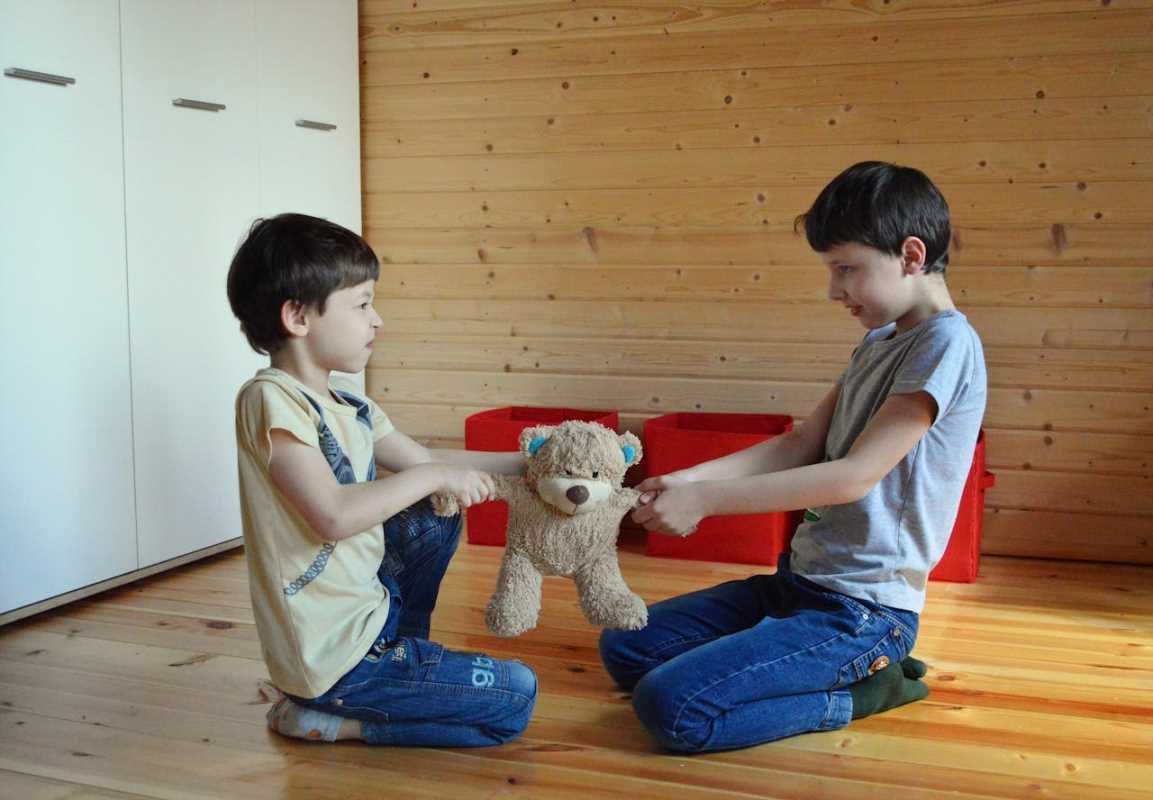Sharing is a critical skill for children that fosters cooperation, empathy, and strong social relationships. Yet the concept of sharing isn’t always easy for young children to understand or practice. Holding onto a favorite toy or not wanting to give someone else a turn can feel natural and even necessary to them. It’s a behavior rooted in their developmental stage, where everything from toys to attention plays a role in defining their sense of security and control.
This guide offers practical strategies for helping your child learn the value of sharing, explaining why this skill is fundamental to their growth. With patience, empathy, and a little creativity, you can encourage generosity and cooperation in ways that respect their needs while building meaningful connections with others.
1. Understand the Root Causes of Refusing to Share
Children often struggle with sharing due to developmental reasons rather than selfishness. Younger children, especially those under the age of 4, are still learning how to see the world from someone else’s perspective. Possessiveness over toys or objects stems from their desire to establish ownership and maintain control in their environment.
For older children, reluctance to share may reflect fears of losing something important or feelings of unfairness, especially if their history of sharing hasn’t always been positive. Understanding these underlying causes allows parents to approach the situation with compassion rather than frustration.
Observe your child’s behavior to pinpoint their specific struggles with sharing. For example, notice whether they become upset only during group play or if the issue occurs even in one-on-one settings. Use their reactions as clues to uncover what might be influencing their emotions, such as a fear of losing their toy permanently or a lack of understanding about taking turns.
2. Model Sharing in Everyday Life
Children often mimic the behaviors they see around them. Demonstrating sharing in your own actions helps them understand how generosity works in real life. When they see trusted adults sharing food, responsibilities, or even emotional support, they begin to internalize the importance of cooperation.
Explaining why you share and how it helps others creates positive associations for the act. For example, saying, “I’m sharing my seat with you so we can sit together,” shows that sharing can create happy moments.
Practice small acts of sharing during daily routines. At mealtime, offer bites of your food to show you’re willing to share. During play, suggest taking turns with a toy, and explain, “Now you have a turn, and then it will be my turn.” These examples show your child how sharing creates teamwork and joy.
3. Create Opportunities to Practice Sharing
Teaching sharing works best when children can engage in low-pressure practice. Set up environments where sharing feels natural and doesn’t involve high stakes, such as playing with non-favorite toys or participating in collaborative activities like crafting.
Regular practice helps them develop the understanding that sharing doesn’t mean forever giving up something and that it often leads to more enjoyable experiences.
Schedule group playdates or organize simple activities that focus on teamwork. Build a block tower together where everyone shares the blocks and contributes. You can reinforce this by saying, “See how much fun we have when everyone helps?” By linking sharing to positive outcomes, children learn to value the experience.
4. Reinforce Positive Behavior
Celebrating moments when your child shares voluntarily is a powerful motivator. Positive reinforcement encourages more of the desired behavior by making them feel accomplished and appreciated.
Praising them in a meaningful and specific way allows them to connect their actions to positive feedback, which builds a stronger association with sharing.
Offer genuine praise when your child shares. Use specific language, such as, “Great job sharing your toy with your friend! I could see how happy it made them.” Avoid over-praising, as this can make the recognition feel insincere. Occasional small rewards, like a sticker or extra playtime, can also reinforce sharing habits.
5. Teach through Stories and Play
Storytelling and pretend play are excellent tools for teaching sharing in a relatable, low-stress way. Through these methods, children explore the benefits of sharing without feeling personally targeted or pressured.
Books about sharing and role-playing activities allow kids to empathize with characters facing similar dilemmas, helping them see how sharing creates kindness and connection.
Introduce books like Llama Llama Time to Share or Should I Share My Ice Cream? to spark conversations about sharing. Enlist toys during pretend play and set up scenarios, such as dolls taking turns with a toy, to demonstrate the importance of cooperation. Ask your child questions during or after play to gauge their understanding.
6. Set Clear Expectations and Boundaries
Rules about sharing help children understand what’s expected of them in different situations. Clear and consistent guidelines create a sense of structure, reducing uncertainty or confusion during playtime.
It’s also important to acknowledge that not everything has to be shared. Children should feel secure in knowing favorite items are respected, which gives them the confidence to share other items without fear.
Explain expectations before play begins. For instance, say, “Today we’ll make sure everyone has a turn with the trains, but you can keep your special teddy bear just for yourself.” Setting limits, like a timer for shared toys, can help with fairness and balance. For example, “You can play with the red truck for five minutes, and then it will be your friend’s turn.”
7. Address Conflicts Calmly and Constructively
Playtime disagreements about sharing are common, and how conflicts are handled sets the tone for future behavior. Yelling or punishing your child could make them feel ashamed or resentful, preventing them from learning the intended lesson.
Teaching conflict resolution means focusing on empathy and helping your child understand the impact of their choices on others. This approach strengthens their emotional intelligence and ability to manage social situations.
Intervene calmly during disagreements and narrate the situation neutrally. For instance, say, “It looks like both of you want to play with the truck at the same time. How can we solve this together?” Encourage them to come up with solutions, like using a timer or playing with another toy while they wait their turn.
Sharing is a Must
Learning to share is more than just a way to get along; it’s a foundational life skill that teaches children empathy, patience, and the importance of collaboration. These abilities help them build healthy relationships at home, school, and beyond.
By fostering a culture of sharing early on, you equip your child not only for better social success but also for a sense of generosity and understanding that benefits them throughout life.
Fostering Generosity in Your Kids
- Use Patience: Some children take longer to grasp the concept of sharing. Avoid comparing them to their peers.
- Celebrate Progress: Focus on improvement rather than perfection.
- Practice in Low-Stress Environments: Offer opportunities for sharing without pressure or high emotion attached.
- Encourage Cooperative Activities: Games or projects with shared responsibilities help reinforce the idea of teamwork.
- Give Time to Adapt: Recognize that understanding others’ perspectives develops gradually.
By implementing these strategies, you create an environment that nurtures empathy, cooperation, and generosity.







